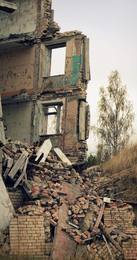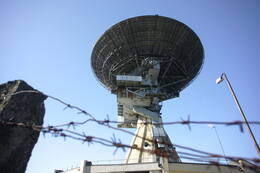Irbenės radijo teleskopų pažeidimai
Prieš išvykdama iš Irbenės, sovietų kariuomenė sugadino visas radijo teleskopų sistemas
Yra versija, kad buvo planas juos susprogdinti jiems išvykstant, bet po radijo astronomų ir mokslininkų protestų jie liko nepažeisti / dėl sprogimo yra dvi prieštaraujančios versijos – pagal vieną tai norėjo padaryti kariškiai, pagal kitą – latviai užėmė karinę bazę. Galbūt bijodamas, kad išvykusieji gali planuoti greitą sugrįžimą.../. Tiesa, kariai išvykdami taip, kaip buvo mokomi, sugadino antenų sistemas – į kabelius buvo įkaltos vinys, rūgštimi apipilti elektros varikliai, netinkami naudoti valdymo blokai.
www.diggers.lv; www.necton.lv; www.ostrog.lv ir kituose šaltiniuose
Susijusi laiko juosta
Susijusios vietos
Žvaigždė - Irbenės kariniai pastatai
200 hektarų ploto teritorija kadaise buvo itin slapta karinė bazė, kurioje buvo įsikūręs 51429 karinis dalinys.







